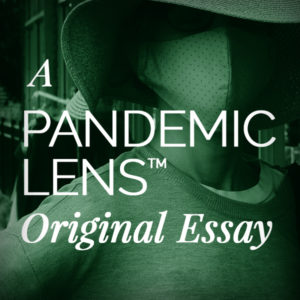The Stories of the Great Flu of 2019
By Jacquelyn Mitchard | August 25, 2020
 We must use the lessons of history to save us.
We must use the lessons of history to save us.
We must use them in practical terms and in artistic terms.
Although it seems now that much of the leadership of our country is taking a hard line about “opening” schools and businesses, against scientific evidence of the dangers of too precipitate a return to “normal” in a world transformed by a deadly virus, this is American stubbornness at its zenith, a quality that can make people brave or stupid or both.
Many authorities believe that there might have been fewer deaths as a result of the great flu of 1918 had the quarantine lasted longer. As a culture, we face a choice. The difficulties of a quarantine culture are real, but the grim price of ignoring those hard-learned lessons will be paid out today in human lives.
Is it possible to think about the merits of urgency versus deliberation in artistic terms as well? I think it is, and I think that dichotomy is something every artist needs to consider when it comes to infusing this crisis into our art.
There are definitely impressions of the COVID-19 pandemic that needed to be created or experienced in the moment. Some of them are just odd, such as Whoopi Goldberg welcoming an audience of empty seats to “The View.” Some of them are heart-stilling, like photographs of the deserted interior of Grand Central Terminal. However, many people who write prose, or write about prose, caution against the rush to set down the stories of the 21st century pandemic. And that is not just because the truest effects of the spread of the disease won’t be evident for years, not weeks or months.
It may be because some kinds of art offer rewards to those who wait. Knowledge, as well as artistry, can be tempered in the fire of time.
I don’t know this for sure, but I’ll bet that, before the current catastrophe, even a writer of Rebecca Makkai’s stature might have gotten a few quizzical looks when it came to the subject of her most recent novel, The Great Believers, which appeared in 2018 and which centers on the AIDS crisis of 1986 in Chicago. Yet Makkai’s triumphant novel owes a great deal to its fluency on understanding the effects of time. Moving back and forth between the 1980s and the present, Makkai’s story, a finalist for the Pulitzer Prize and the National Book Award, examines not only the shock and grief of the doomed young men and the people who love them but also the determination of those who survived them to make meaning of their brief lives. That history is often uncomfortable, as it is uncomfortable for me to remember covering the AIDS crisis as a young reporter in the 1980s, when some spoke of the disease scathingly as “the gay cancer” and some were afraid to enter the room where a sufferer lay dying (a fear ironically more pertinent to this pandemic than that one …).
As a society, we had not learned certain lessons then, among them that love is love and that mercy is even more contagious than disease.
So I can hope that along with greater understanding, not just of this crisis, of COVID-19, but of our own best natures in response to crisis, will come our best art. Where are the great novels and stories of this pandemic? They are sheltering at home, waiting to be free.
Copyright © 2020 Jacquelyn Mitchard
Jacquelyn Mitchard is the author of 22 novels for adults and teenagers, including My Only, which will be out in May, 2021, from Mira/HarperCollins. A New York Times bestselling author, her stories have won or been short-listed for the Shirley Jackson Award, the Orange Prize for Fiction, the Bram Stoker Award and others. A member of the fiction jury for the 2003 National Book Awards, and a longtime journalist, she lives on Cape Cod with her family